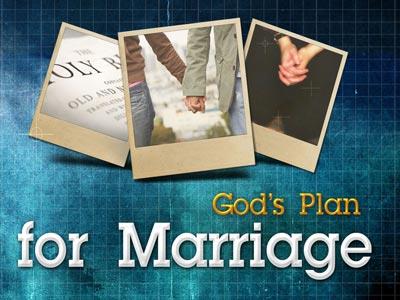-
Marriage: Help Meet Series
Contributed by Rodney V Johnson on Nov 28, 2017 (message contributor)
Summary: Discusses what it means to have a "Help Meet"
Marriage Vows: Accepting Your Helpmeet
Introduction
Last week my message dealt with the Blood Covenant. I shared with you why I personally think that a marriage is a blood covenant and should not entered into lightly. This is part 2 of the covenant message and we will be looking at the words we say during the marriage ceremony and what we actually agree to when we say them. These words are referred to as vows although in essence they are actually covenants. The term means “a solemn promise, especially one made to God.” When we choose to marry, we have in mind the type of person that would be fit us. We look at several characteristics of the individual, spiritual, physical and emotional normally rank at the top of the list. We have a list of things the person should be able to do as well as a list of things that we do not want that person to be doing. All of these things are our attempt to find a suitable partner. Webster’s dictionary defines partner as “one who joins in an activity with another or others.” So when we repeat the marriage covenants, we are agreeing to take the other person as our partner, a full participating partner. Some of you who work in business may be familiar with partnerships. Some business partnerships are equal partners while some are not. Some partnership may have a silent partner, one, which does not have say in the everyday actions of the business. This is not what God meant for a marriage, although some people believe that the wife is a silent partner. Before we look at what God’s intention is for marriage, I want to first walk quickly through the traditional Christian marriage vows – just to refresh your memory.
I. Traditional Christian Marriage Vows
One point I want to make at this time is this: the traditional marriage ceremony that we see in our times is different from the marriage ceremony of ancient times. During those times, most marriages were by agreement between two families. Once the agreement had been met, the woman left her family and went to live with her new husband. During the Roman Empire, there were many common law or free marriages. The father would deliver the bride to the groom. The Romans who were wealthy would often sign documents consisting of listings of property rights and letting all know that they wanted this union to be legalized and not to be thought of as a common law marriage. This was the beginning of the official recording of marriages.
The Church did not get involved with marriages until the ninth century. English weddings in the thirteenth century among the upper class became religious events. In 1563 the Council of Trent required that Catholic marriages be celebrated at a Catholic church by a priest and before two witnesses. By the eighteenth century the wedding was a religious event in all countries in Europe. In Colonial times in North America, the customs of the old countries were followed. There were some that only wanted a civil ceremony and not a religious ceremony and the Colonists who wanted civil marriages passed laws to this affect. Civil and common law marriages are very common today. With this background information, you see that the traditional marriage ceremony is only a few hundred years old. Now lets examine the actual marriage vows and the meaning behind the words.
In a traditional Christian wedding, the opening sets the stage for all those in attendance. One thing that stands out is the reference to God and His blessings for the marriage relationship. It also reviews why God instituted marriage, what we discussed earlier. As each person listens to the introduction, they have time to reflect on what they are about to do in entering into this covenant relationship. The next part starts the actual statements of commitment. Again, the statements of commitment are asked in question to ascertain that the person fully knows and understands what they are doing.
“Dearly beloved, we have come together in the presence of God to witness the joining together of this man and this woman in holy matrimony. The sacred relationship of marriage was established by God in creation, and our Lord Jesus Christ adorned marriage by His presence and first miracle at the wedding of Cana of Galilee. The apostle Paul chose marriage to symbolize the union between Christ and His Church, and Holy Scripture commends marriage to be honored among all people. The union of heart and wife in heart, body and mind is intended by God for their mutual joy; for the help and comfort given to one another in prosperity and adversity; and when it is God’s will, for the procreation of children and their nurture in the knowledge and love of the Lord. Therefore, marriage is not to be entered into unadvisedly or lightly, but soberly, deliberately and in reverent fear before God. Into this holy union, Groom and Bride now come to be joined.”

 Sermon Central
Sermon Central



